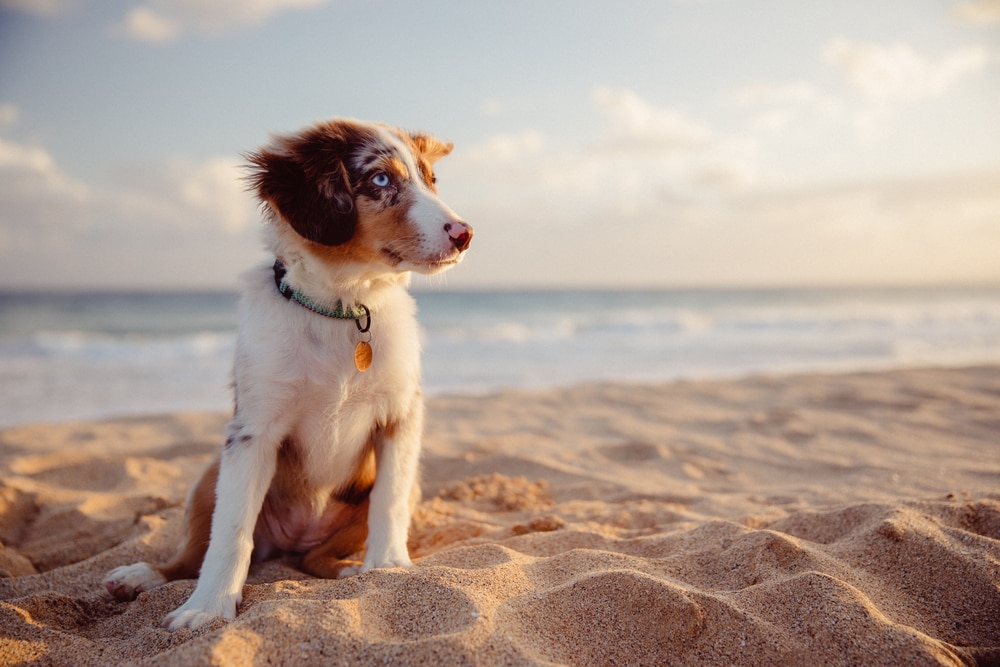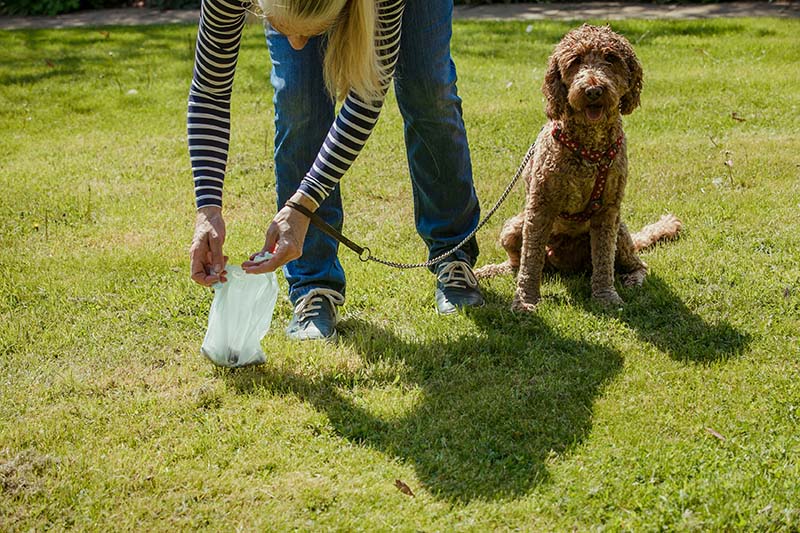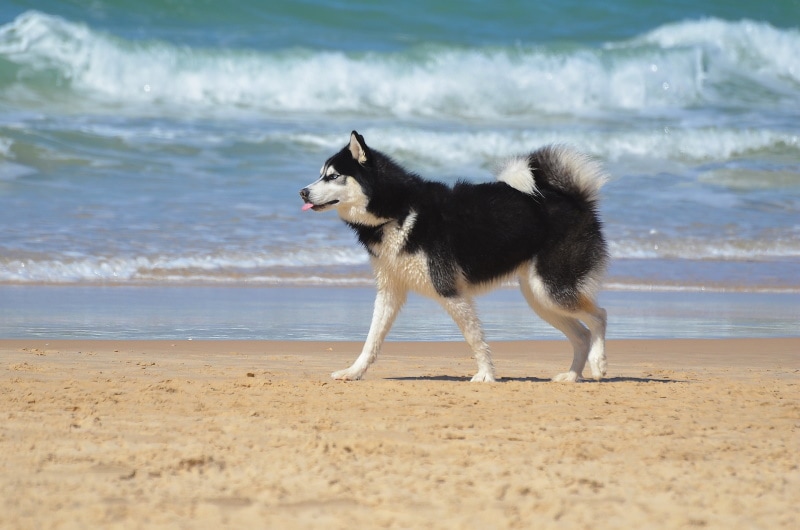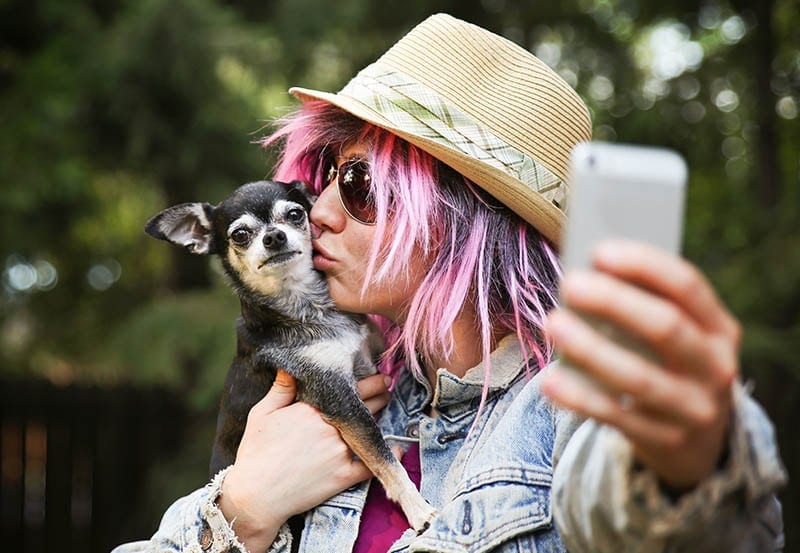Dog Beach Etiquette: 9 Tips for a Well-Behaved Pet

Updated on

Click to Skip Ahead
A trip to the local dog beach can be a ton of fun. It can also devolve into an embarrassing mess if you are not careful. Dog beaches are generally wide open spaces with many different people, dogs, and animals in the vicinity. That means that you and your dog need to be aware of the local rules and etiquette to prevent a bad situation from unfolding.
Dogs that do not know commands, wander out of sight and bother other people can turn a great day in the sun into a stressful experience. In the worst case scenario, you can ruin someone else’s day or even get into legal trouble. That is why it is imperative to know the general expectations for a dog on the beach.
Here are nine rules and commands to observe for a well-behaved pet on the beach.
The 4 Commands Your Dog Should Know Before Going to the Beach
Many cities and municipalities have rules about dogs being off leash. Many places require your dog to be under voice command to be allowed off leash. Voice command means that your dog can respond to simple verbal commands in a timely manner. These are the types of commands your dog needs to know to be off leash at the beach.
1. Come
One of the most important commands your dog needs to know is to come. If your dog gets too far away or starts to bother other people or dogs, it needs to be able to come back at a moment’s notice. You want your dog to be able to break focus and come back in one or two calls. You do not want your dog to get in a bad situation where it will not respond to commands.
2. Stay
Similar to come, your dog also needs to know how to stay. If the dog comes back but then runs off at a moment’s notice, it doesn’t matter how well it can come in the first place. You need to be able to have your dog stay to avoid potentially dangerous situations like aggressive dogs, beach traffic, or jellyfish.
3. Stop
Stop is similar to come, but it just works to break your dog’s concentration. Stop doesn’t mean they have to come back; they just need to quit doing whatever they are doing. Some owners like to use the phrase quit it instead of stop. Stop is a command that is important if your dog starts getting into someone else’s personal space or starts bothering another less social dog.
4. Leave It
The beach is full of many interesting sights, sounds, and smells. Dogs could find themselves getting into anything from seaweed to floating trash to washed up aquatic life. That is why the command to leave it is such an important command. Your dog needs to know when they need to leave something alone. Leave it tells the dog to stop getting into whatever they are interested in and move on.
The 5 Rules for General Dog Beach Etiquette
5. Make Sure Your Dog Is Vaccinated
Before taking your dog out in public, you should make sure that it is up to date on all of its vaccines. The last thing you want is to have your dog get into an altercation with another dog or, heaven forbid, a person and have to have an awkward conversation about how your dog is not vaccinated. Unvaccinated dogs can be a danger to public health. If your dog is caught without proper vaccines, it can result in a fine, or if your dog bites someone or something and is unvaccinated, it could result in a lawsuit or even losing your dog. It is critically important for your dog’s health, others’ health, and your own personal liability to keep your dogs vaccinated if you plan on taking them to the beach.
6. Always Pick Up After Your Pet

No one likes someone who leaves a mess behind their dog. Dog poop can quickly foul a beach. It can contaminate the water, which can make dogs and people sick if they swim in it. Dog poop can attract flies and other pests. Lastly, it stinks and could accidentally get on beachgoers’ feet. Many people walk the beach barefoot, and the last thing you want is someone to step in a pile of dog feces with bare feet and learn that it was your dog that caused the mess.
Not picking up after your dog at a public beach is a huge faux pas and could even be illegal. Be sure to bring your own doggy clean-up bags because not every park has them available to the public.
7. Keep Your Dog Out Of Other People’s Personal Space
Most people at the dog beach are dog people, but that doesn’t mean they want your dog invading their personal space. Sometimes dogs get very excited when they get to the dog beach, and that can cause them to run up to strangers and even jump on people. But you should never let your dog jump on someone unless they specifically say it is okay. Be courteous to other beachgoers. If your dog starts checking someone else out, ask them if it is okay if your dog approaches them. This is why being on voice command is so important. If the other person says no thank you, you do not want to have to drag your dog away by force.
8. Never Let Your Dog Out Of Your Sight
The beach can be a busy and beautiful place. Between the surf, the sand, and the other people, it can be easy to get distracted, especially if you are with friends. As fun as the dog beach is, you should never ever let your dog out of your sight. If you can’t see your dog, you can’t control your dog. Your dog could be bothering other people, wandering far away, or getting into danger with cars, other dogs, or strangers. You need to be able to recall your dog before they get too far away and never let them get out of view.
Dog beaches are often specifically marked out. They have well-defined boundaries. Some beaches have areas that are off-limits to people and dogs. Things like sand dunes, boardwalks, nesting areas, and sea oat beds can be prohibited for dogs. You do not want to catch your dog digging in sensitive sand dunes, and you absolutely do not want to be the one that has to wade in after them into an off-limits area of the beach. Keep them within the bounds of the dog beach and away from the regular beach, roads, and off-limits areas.
Know The Legal Rules
Most of these rules are social suggestions to help keep you in the norm for dog behavior in a public setting. However, there can also be a slew of legal rules that apply to your local dog beach. Before you go, you should look up the rules, regulations, and laws that are specific to your local area. Some places require collars, while others require leashes. Some dog beaches have specific hours. Most of the time, your dog will need certain vaccines or registration with the county. You can have all of the social rules and norms down to a science, but if you neglect the legal rules, you can still find yourself in a bad situation.
The specific rules for dogs will vary from place to place, so look up your individual beaches and county for the most up-to-date and accurate information.

Conclusion
These rules will help make your trip to the dog beach as smooth and enjoyable as possible. A misbehaving dog can make your life stressful, and it can make other people’s lives stressful. Being able to adhere to all of these basic rules will keep your dog safe and help keep other people healthy and safe. If you are not confident in your dog’s ability to keep up with some of these rules, do not be afraid to practice at home or seek help before you make the trip.
- See also: Dog Walking Etiquette: 9 Top Tips
Featured image credit: brycekauai, Shutterstock













